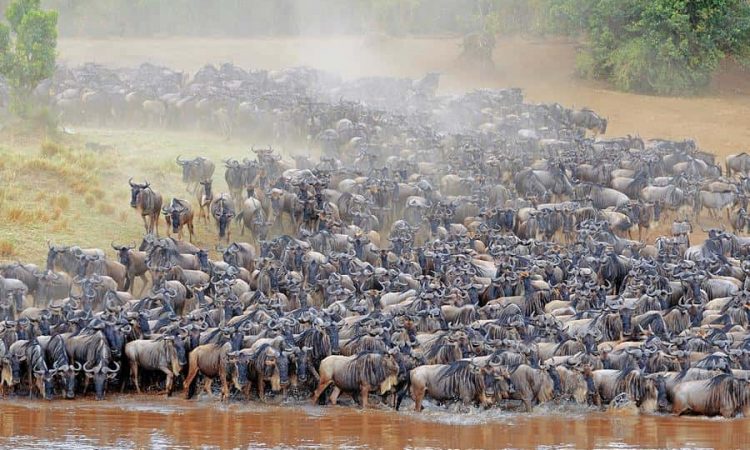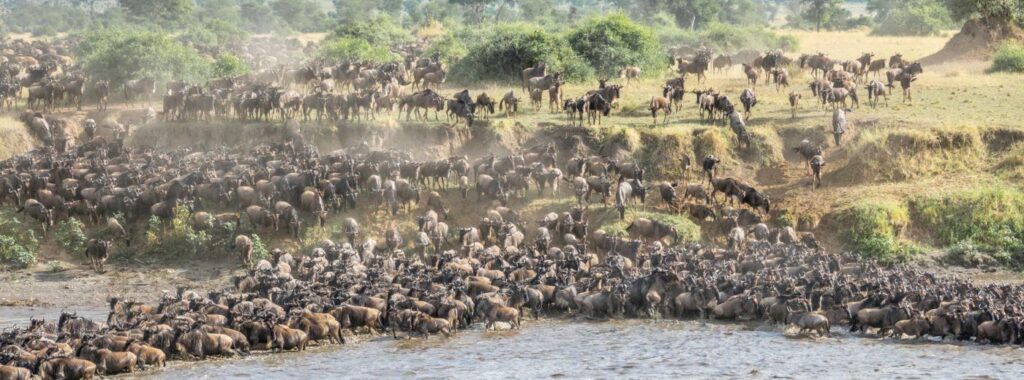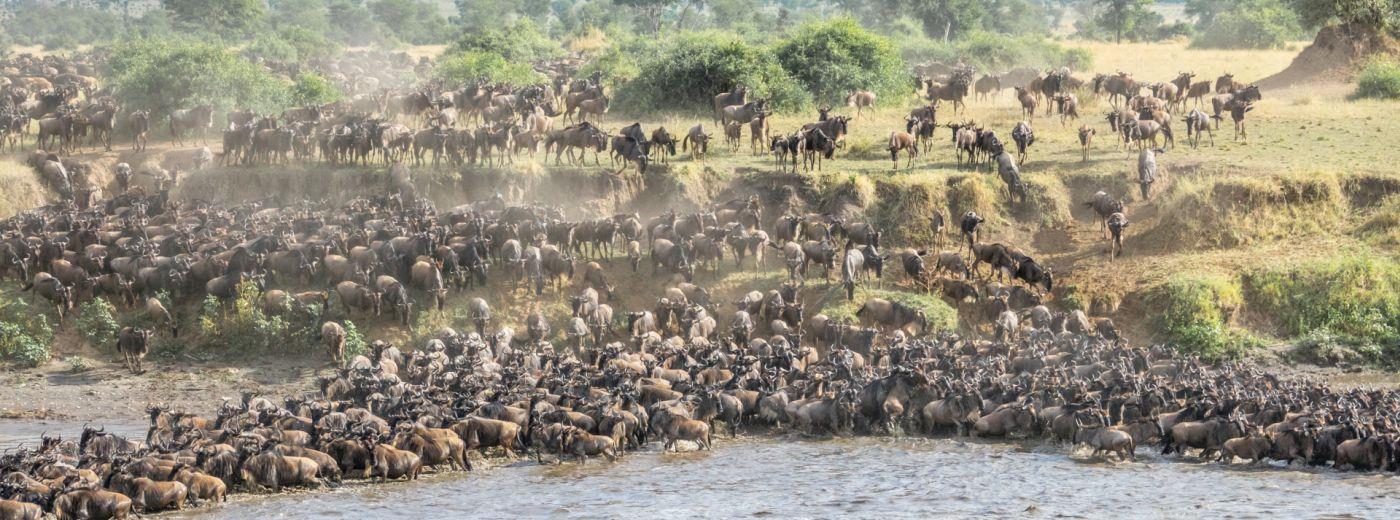The Serengeti Animal Migration in Tanzania
The Serengeti Animal Migration in Tanzania is one of the most extraordinary wildlife spectacles on Earth. Often referred to as the Great Migration, it involves over 1.5 million wildebeest, 200,000 zebras, and thousands of gazelles moving across the Serengeti–Mara ecosystem in search of fresh grazing and water. This cycle of movement is not only breathtaking in scale but also a testament to the power of nature, survival, and the interconnectedness of life on the African savannas.

What is the Serengeti Migration?
The Serengeti Migration is the largest terrestrial migration in the world. It is a continuous, year-round movement of herbivores following seasonal rains and the growth of new grasses. Predators such as lions, cheetahs, hyenas, and crocodiles closely follow the herds, creating dramatic encounters and unforgettable safari experiences.
Unlike the misconception that the migration happens only once a year, the event is ongoing. At different times of the year, herds occupy different parts of the Serengeti and cross into Kenya’s Maasai Mara, creating diverse viewing opportunities throughout the calendar.
The Migration Calendar: Where to See It
December – March: Calving Season in Southern Serengeti
The herds gather in the Ndutu and Southern Serengeti plains. This is calving season, when nearly half a million wildebeest calves are born within a few weeks. Predators abound, making this one of the most thrilling times to witness the migration.
April – May: Movement Toward Central Serengeti
As the rains subside, the herds begin moving northward through the Central Serengeti, where lush grasses still provide grazing. This period sees large columns of animals stretching for miles across the plains.
June – July: Grumeti River Crossings
The herds reach the Western Corridor, where they face the perilous Grumeti River crossings. Crocodiles lie in wait, and the drama of predator-prey interactions intensifies.
August – October: Mara River Crossings
This is the most famous phase of the migration. Herds cross the Mara River into Kenya’s Maasai Mara. The sight of thousands of wildebeest plunging into crocodile-infested waters while predators lurk nearby is one of nature’s most awe-inspiring events.
November: Return to Serengeti
With the rains returning to the south, the herds gradually move back into the Serengeti, completing the cycle and beginning it anew.

Why the Serengeti Migration is Special
The Serengeti is a UNESCO World Heritage Site and one of Africa’s most pristine ecosystems. The migration is not only the largest movement of land mammals on Earth but also one of the most dramatic wildlife encounters for travelers. It showcases the raw forces of life and survival, highlighting the fragile balance between predator and prey.
Best Ways to Experience the Migration
Travelers can experience the migration on guided game drives, mobile camping safaris that follow the herds, or even hot air balloon safaris over the Serengeti plains. Each option offers unique perspectives, from ground-level drama to breathtaking aerial views.
Plan Your Serengeti Migration Safari with African Wild Trekkers
Experiencing the Serengeti Migration is a once-in-a-lifetime adventure. African Wild Trekkers specializes in creating tailor-made itineraries that place you in the right location at the right time to witness this spectacle. Whether you want to see calving season in Ndutu or the Mara River crossings, we ensure your safari is unforgettable.
Book Your Safari Today
Join us at African Wild Trekkers for a front-row seat to the Serengeti Animal Migration in Tanzania—an adventure that will stay with you forever.
